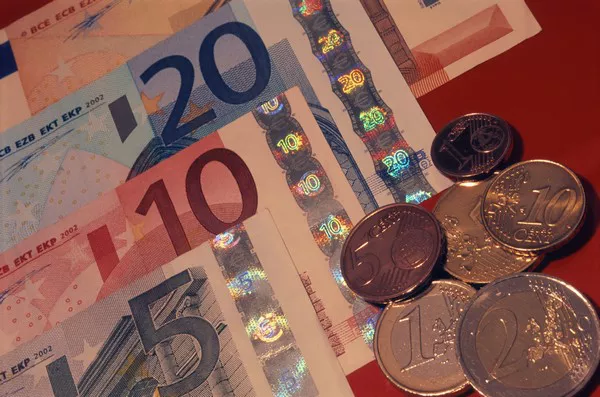The strength and stability of currencies play a pivotal role in the global economic landscape. One of the most closely watched currency pairs is the Euro (EUR) and the United States Dollar (USD). In recent years, the Euro has exhibited a persistent weakness against the US Dollar, leaving many to wonder about the underlying factors contributing to this trend. This article delves into the complex dynamics that have led to the Euro’s weakness against the Dollar and explores the economic, political, and financial drivers behind this phenomenon.
Economic Factors
a. Interest Rate Differentials
One of the primary drivers of currency exchange rates is interest rates. The Eurozone and the United States have maintained different monetary policies, leading to interest rate differentials that influence the exchange rate. The European Central Bank (ECB) has kept interest rates at historically low levels due to economic challenges within the Eurozone, while the US Federal Reserve (Fed) has implemented a more hawkish monetary policy, raising rates to combat inflation. As a result, investors are drawn to higher yielding US assets, increasing demand for the US Dollar.
b. Economic Growth Disparities
Economic growth is another crucial factor affecting currency strength. Over the past decade, the Eurozone has faced a series of challenges, including sovereign debt crises and sluggish growth, which have eroded confidence in the Euro. In contrast, the United States has experienced more robust economic growth, driven by factors like technological innovation, a strong labor market, and fiscal stimulus. A stronger economic outlook attracts investors and capital flows to the United States, putting additional pressure on the Euro.
c. Trade Imbalance
Trade imbalances can influence the strength of a currency. The Eurozone consistently maintains a trade surplus with the United States, as it exports more goods and services than it imports. While this would generally be expected to support the Euro, it has not been sufficient to offset the other economic headwinds facing the Eurozone. Furthermore, the large US trade deficit means that more US Dollars are circulating in the global economy, creating an overabundance of the currency, which can lead to depreciation of the Euro.
Political Factors
a. Political Uncertainty
Political stability is a fundamental element in currency valuation. In recent years, the Eurozone has grappled with political uncertainty, including issues such as Brexit, the rise of populism, and disagreements among member states over fiscal policies. These uncertainties have led to decreased confidence in the Euro as a stable currency. On the other hand, the United States has demonstrated relatively more political stability, despite occasional partisan divisions. This political contrast between the Eurozone and the US has contributed to the Euro’s weakness.
b. Brexit
The Brexit saga had a profound impact on the Euro’s strength against the US Dollar. As the UK, a major European economy, chose to leave the European Union, it introduced significant uncertainties into the Eurozone. The subsequent negotiations and the potential disruption of trade and investment flows further weighed on the Euro. Moreover, as the UK and the US share strong economic ties, Brexit-related uncertainties also affected the Euro-Dollar exchange rate.
Financial Factors
a. Quantitative Easing
Quantitative easing (QE) policies, which involve central banks buying financial assets to inject money into the economy, can influence currency values. The ECB has implemented multiple rounds of QE since the global financial crisis to stimulate the Eurozone economy. While these measures were essential to prevent deflation and support economic recovery, they had the unintended consequence of weakening the Euro. By increasing the supply of Euros in the market, QE has contributed to the currency’s depreciation.
b. Safe-Haven Status
The US Dollar enjoys a safe-haven status during times of global uncertainty. Investors flock to the Dollar in times of geopolitical instability or economic crises, as they perceive it as a reliable store of value. The Euro, while a major global currency, does not have the same level of safe-haven appeal. Recent geopolitical tensions and economic concerns have reinforced the Dollar’s safe-haven status, boosting its strength at the expense of the Euro.
Pandemic and Recovery
The COVID-19 pandemic and the responses of Eurozone and US authorities have further illuminated the divergence between the Euro and the Dollar. The Eurozone was severely impacted by the pandemic, with some countries, like Italy and Spain, being particularly hard-hit. The European Union introduced a recovery fund to mitigate the economic effects of the pandemic, but its deployment has been slow and contentious. In contrast, the United States implemented multiple rounds of fiscal stimulus to support its economy. These disparities in response to the pandemic have widened the economic gap and, consequently, weakened the Euro.
Future Outlook
While the Euro has faced several challenges against the US Dollar in recent years, it is essential to recognize that currency exchange rates are dynamic and subject to change. The Eurozone’s economic performance and political stability will continue to influence the Euro’s strength, as will the US Dollar’s status as a global reserve currency. To bolster the Euro’s position, Eurozone policymakers may need to implement structural reforms, foster economic growth, and enhance political stability.
Conclusion
The Euro’s weakness against the US Dollar can be attributed to a confluence of economic, political, and financial factors. Interest rate differentials, economic growth disparities, political uncertainties, and safe-haven preferences have all contributed to the Euro’s depreciation. Additionally, the Eurozone’s response to the COVID-19 pandemic has further exacerbated these disparities. However, it is important to remember that currency exchange rates are dynamic and influenced by a multitude of factors. Policymakers in both the Eurozone and the United States will play crucial roles in shaping the future of these two major currencies, making it essential to monitor ongoing developments and adapt to evolving economic conditions.


